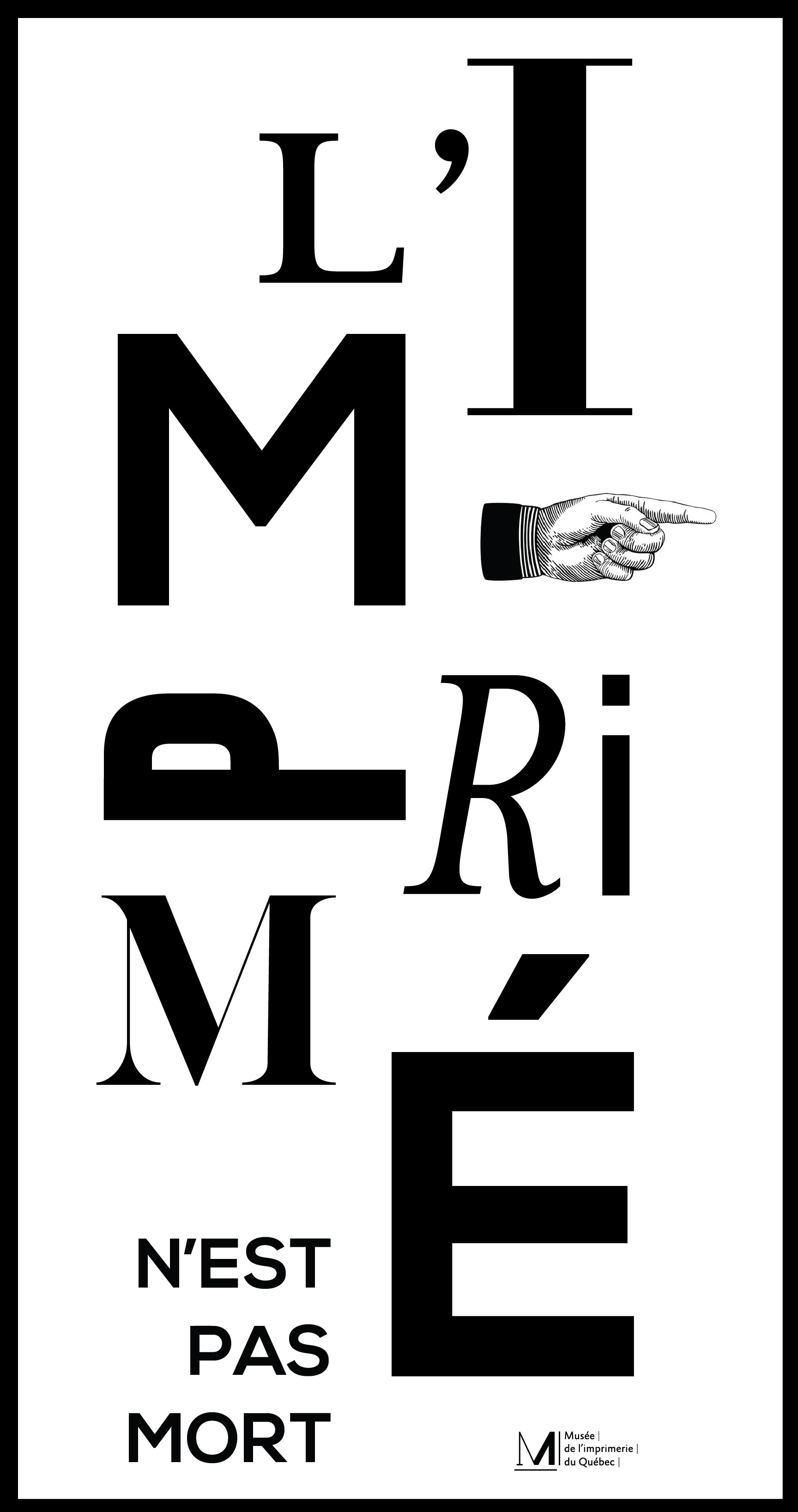 The Printing Press between Paper and Thought
The Printing Press between Paper and Thought
When: Vernissage: Thursday, February 6, 2020, from 6:30 p.m. until 8:30 p.m
Exhibition: From Tuesday, February 4 to Thursday, February27, 2020, during opening hours of the library
Contact the library to insure that the Discovery Room will not be occupied at the time of your visit.
Where: Beaconsfield Library, Discovery Room
303 Beaconsfield Blvd, Beaconsfield H9W 4A7
Everyone welcome. Free entrance.
This exhibition, sponsored by the Société historique Beaurepaire-Beaconsfield Historical Society, has been prepared by Jacques G. Ruelland, historian, and Michel Desjardins, President of Musée de l’imprimerie du Québec.
This exhibition shows in six periods the history of the press in Quebec, since its introduction in Montreal in 1776 by Fleury Mesplet until today.
======================================
Sir Wilfrid Laurier Memorabilia
When: Vernissage: Saturday, February 9, 2019, from 2p.m. until 4:30 p.m
Exhibition: From Tuesday, February 5 to Saturday, March 2, 2019, during opening hours of the library
Contact the library to insure that the Discovery Room will not be occupied at the time of your visit.
Where: Beaconsfield Library, Discovery Room
303 Beaconsfield Blvd, Beaconsfield H9W 4A7
Everyone welcome. Free entrance.
This exhibition, sponsored by the Société historique Beaurepaire-Beaconsfield Historical Society, has been prepared by Jean-Pierre Dion and Jacqueline Beaudry Dion from their collection. Wilfrid Laurier (1841-1919) has been leader of the Liberal Party of Canada for over 30 years and Prime Minister of Canada for 15 consecutive years (1896-1911). Very popular during his lifetime as well as after his death, Laurier remains one of the most admired Canadian statesmen. Not surprisingly, there are more memorabilia (collectables) related to Laurier than to the other Prime Ministers all together. This exhibition will display some of Laurier collectables: painting, photographs, furniture, ceramic plates, glassware, tobacco items, books and others.

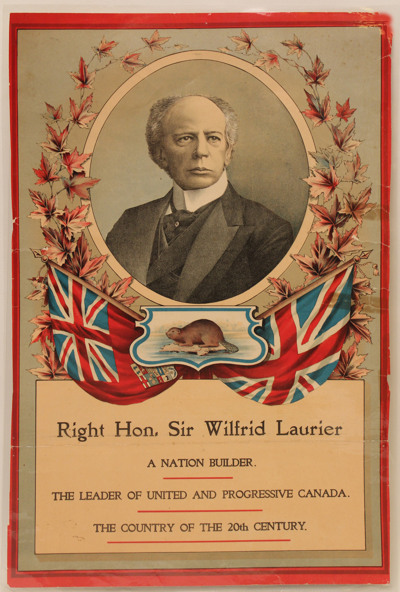
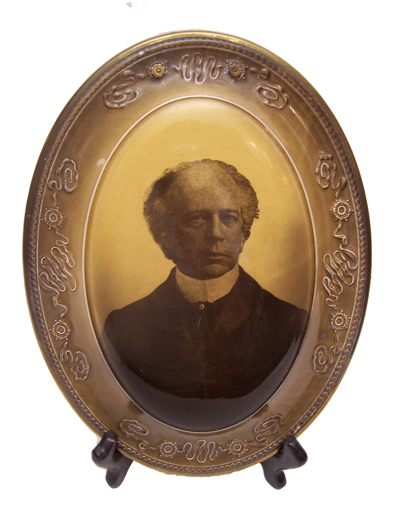
======================================
EXPO '67 Canada's Centennial Crown Jewel
When: from Tues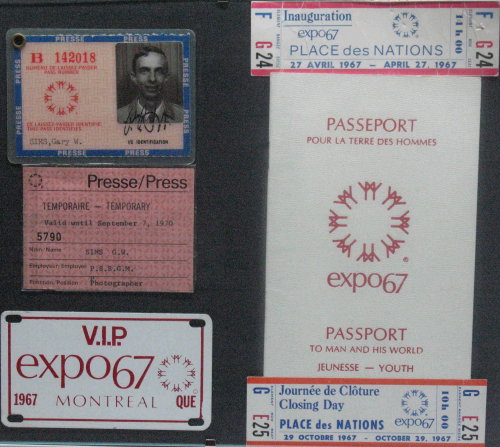 day, September 26 until Wednesday, October 25, 2017
day, September 26 until Wednesday, October 25, 2017
Where: Discovery Room
Beaconsfield Library
303 Beaconsfield Blvd, Beaconsfield H9W 4A7
Vernissage: Thursday, September 28, 2017, from 7 p.m. until 8:30 p.m.
Some of the rare items from the collection of Gary W. Sims will constitute the main part of the Expo 67 exhibit at the Beaconsfield Library. He had special access to the Expo 67 site as Press Correspondent for the Lachine Messenger at the age of 17. Gary started collecting Centennial & Expo 67 items at the age of 14. Items from his collection have been displayed in different venues, including this year at the Biosphere and the Centre d’histoire de Montréal celebrating the 50th anniversary of Expo 67.
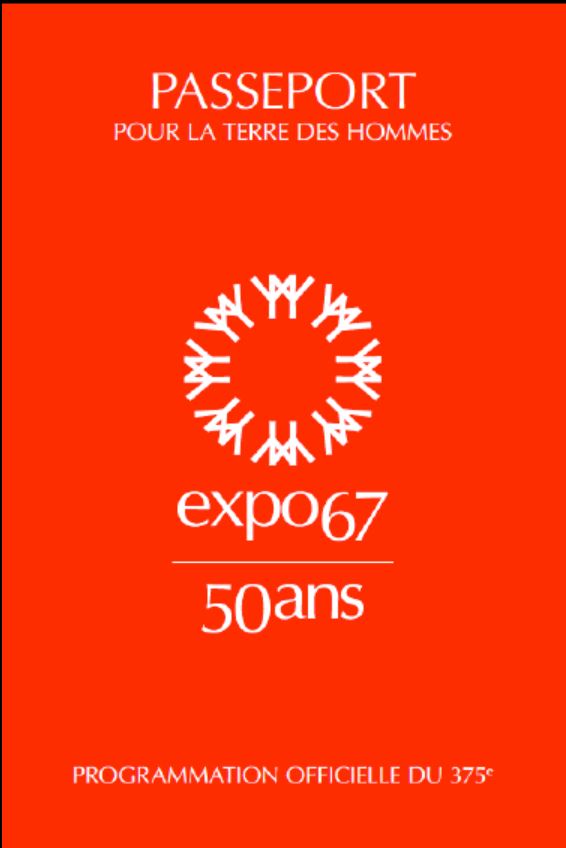
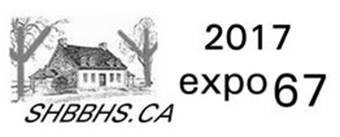
Note: Only paper passports will be stamped as there is no virtual electronic passport support.
You may obtain your free blank paper passport at participating museums.
Trends: 1954-2011
When : Vernissage: Thursday, May 5, 2016, 19:00 to 20:30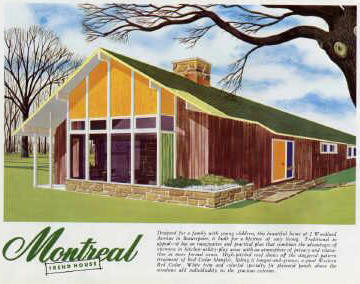
Exhibition: Monday, May 2 to Friday, May 27, 2016
Contact the library to insure that the Discovery Room will not be occupied at the time of your visit.
Where: Beaconsfield Library, Discovery Room
303 Beaconsfield Blvd, Beaconsfield, H9W 4A7
Everyone welcome. Free entrance.
Information: Contact us
This exhibition, sponsored in parts by the Société historique Beaurepaire-Beaconsfield Historical Society, has been produced by Alexandre Petitpas, student of DESS (Graduate Diploma) in Modern Architecture and Heritage at UQÀM. He prepared this exhibition as a research study during the summer 2015 semester, being interested in the Trend House program and especially in the Beaconsfield Trend House in Beaurepaire.
Precisely five years after the demolition of the Trend House that was located at the corner of Woodland Avenue and Lakeshore Road, Alexandre Petitpas presents: The Trend House Program, The Beaconsfield Trend House, Its Architect Philip P. Goodfellow, The Wood of the West and their Products, West Coast Modern Architecture, Typological Innovations, Technological Innovations and the Modern Interior of the '50s.
To produce this exhibition, he consulted the historical society's documentations and was able to meet with Michael Goodfellow, son of the architect of the Beaconsfield Trend House, Philip P. Goodfellow.
Housewife Heroines of World War II
When : Vernissage: Thursday, February 4, 2016, 1:30 to 3:30 p.m.
Exhibition: Thursday, February 4 to Friday, February 26, 2016, during library opening hours
Contact the library to insure that the Discovery Room will not be occupied at the time of your visit.
Where: Beaconsfield Library, Discovery Room
303 Beaconsfield Blvd, Beaconsfield, H9W 4A7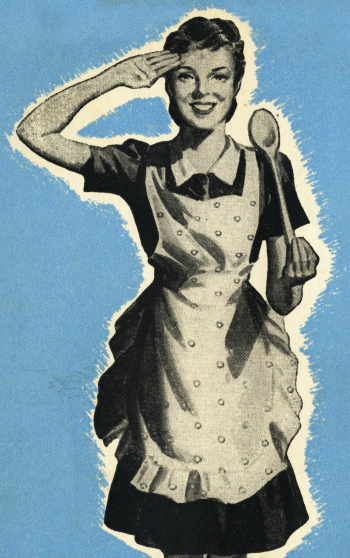
Everyone welcome. Free entrance.
Information: Contact us
Housewife Heroines: Anglophone Women at Home in Montreal during World War II
Funded through the World War Commemorations Community Fund of the Department of Canadian Heritage, Housewife Heroines tells the little-known World War II story of how so many Canadian women contributed to the war effort through their unpaid work at home. The project's focus is on English-speaking housewives in Montreal, the center of Canada’s Anglophone official language minority community.
In October and November 2015, the Housewife Heroines team brought together seniors and other community members, collaborators from various QAHN member-organizations, and members of QAHN’s staff and Montreal Committee, in a series of informal workshops focusing on the theme of women's domestic wartime contributions. These gatherings took place in Montreal, Westmount and Beaconsfield.
Historians Lorraine O’Donnell and Patrick Donovan have been heading up the Housewife Heroines research team, with administrative support from Dwane Wilkin at the QAHN office.
The next phase of this fascinating project was the creation of a travelling exhibition which will tour venues around Quebec.
Exhibition Sponsored by QAHN (Quebec Anglophone Heritage Network): 1 (877) 964-0409 / This email address is being protected from spambots. You need JavaScript enabled to view it.
WWI Western Front Photograph Exhibit - Part 2
This exhibit stems from the acquisition of an album containing 122 "Official War Photos" of the Great War.
The first exhibit held in 2014 with 43 large format images focused on the early years of the war. This exhibit of 40 other large format images continues with a focus on the Hindenburg line and the decimation of many towns and villages along the Western Front, in Belgium and in France.
These photos will be accompanied by interesting artifacts:
Items related to Lieutenant Bert Sargent and Derek Grout's book "Thunder in the Skies"
Selected great works from the sketch book of Private Adam Reid enlisted in the Cameron Highlanders in 1915.
Items related to William Hill of the Royal Canadian Medical Corps (RCMC)
Gramophone records manufactured in Montreal's St-Henri district.
“Star War Map” published by the Montreal Star newspaper
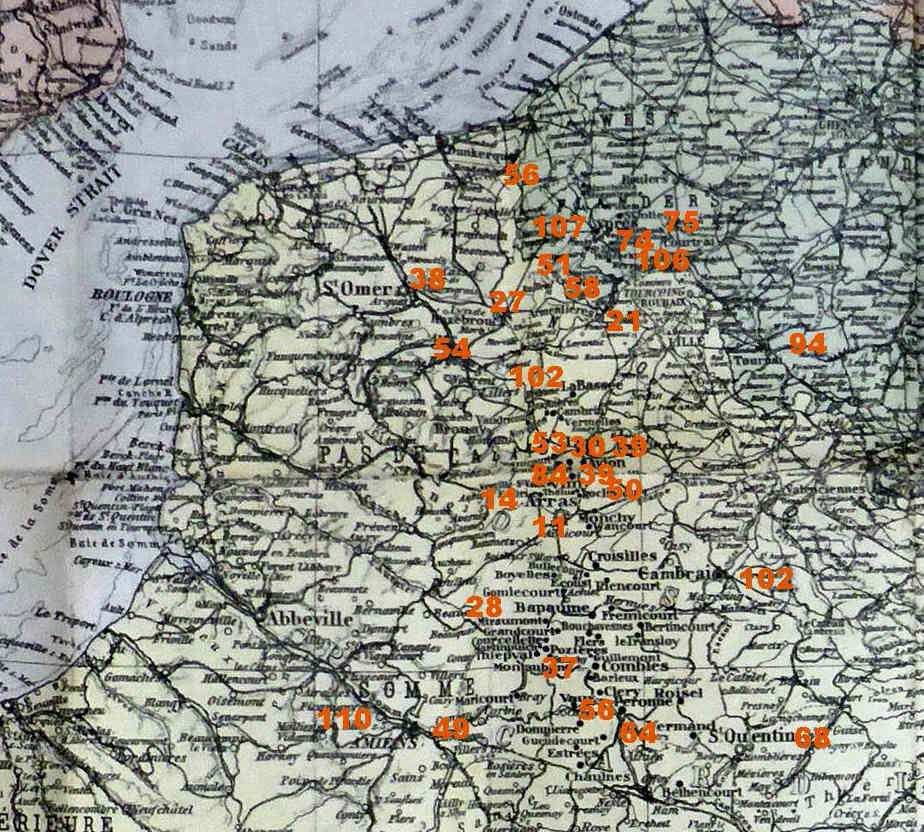
When : Vernissage: Thursday, Novembre 5, 2015, 19:00 to 20:30
Exhibition: Tuesday, November 3 to Friday, November 27, 2015, during library opening hours
Contact the library to insure that the Discovery Room will not be occupied at the time of your visit.
Where: Beaconsfield Library, Discovery Room
303 Beaconsfield Blvd, Beaconsfield, H9W 4A7
Everyone welcome. Free entrance.
Information: Contact us
Western Front Photograph Exhibit Part 1
100 years ago, in August 1914, the German Army opened what became the Western Front by first invading Luxembourg and Belgium, then gaining control of important industrial and mining regions in Northern France. The Great War was fought underground, at Sea, and in the Air but most of the deaths occurred on the land in trenches.
This exhibit is a result of acquiring a collection of 122 original "Official War Photos". The SHBBHS historical researchers have reproduced a selection of photos into large image formats and organized them by the battles where thousands of Canadians gave their lives as well as other themes. In addition to a description of each image, informative background context with location maps will provide the visitor an introduction to the Great War.
Original WWI artifacts will also be on display.
When : Vernissage: Thursday, Novembre 6, 2014, 19:00 to 20:30
Exhibition: Friday, November 7 to Sunday, November 30, 2014, during library opening hours
Contact the library to insure that the Discovery Room will not be occupied at the time of your visit.
Where: Beaconsfield Library, Discovery Room
303 Beaconsfield Blvd, Beaconsfield, H9W 4A7
Everyone welcome. Free entrance.
Information: Contact us
Old Hand Tools
When : Vernissage: Saturday, May 10, 2014, from 14:00 to 16:00
Exhibition: Tuesday, May 6 to Saturday, May 31, 2014 extended til Wednesday, June 11, 2014, during library opening hours
Where : Beaconsfield Library, media room
303 Beaconsfield Blvd, Beaconsfield, H9W 4A7
Everyone welcome. No entrance fee.
Information : Contact us
Description: Grouped and Itemized Exhibition of tools.
| Idnum | Desc. | Use |
| Settling |
| 70 | Stone tool No. 1 | Ancient stone tools found in Beaurepaire.These four items were discovered by Adrian Willison as he |
| dug a vegetable garden at 13 Thompson Point some years ago and he remarked that they looked like |
| “stone tools”. They were carefully ‘house broken’ and several years later seen by Dr. Gerard Leduc who |
| has studied stones and petroglyphs in Canada and New England for many years. He stated that they |
| were authentically created by human hands well in the past. |
| The Historical Society now wonders if any other Beaconsfield gardeners have discovered similar pieces |
| in their gardens, or elsewhere. |
| 71 | Stone tool No. 2 |
| 72 | Stone tool No. 3 |
| 73 | Stone tool No. 4 |
| 112 | Broad Axe | Broad axe, 10", c. 1770-1810, marked with broad arrow (to denote crown property), and 'E' (probably |
| Royal Engineers). A broad axe had a short (18") handle and was used to square timbers. |
| 113 | Unpolled colonial Axe Head | Pre-1760, marked with weight, '4' (pounds) of British manufacture |
| 114 | Polled colonial Axe heads (2) | One is marked with a broad arrow to denote crown property, c. 1770-1800; Probably used to cut trees |
| and splitting tree trunks |
| 115 | Felling axe head | American felling axe, with maker's mark 'T. GARRET', c. 1810-1830. |
| Lumberjack |
| 33 | Wedge | A wood splitting wedge is a triangular shaped tool used to split logs. |
| 34 | Wedge with chain | Wedge used to maintain spacing when sawing log. The chain allowed an easier recovery of the wedge |
| in the snow. |
| 64 | Crosscut Saw, two-man | Large crosscut saw with blade of 7 feet long with a combination of plain and M teeth, with a handle at |
| each end, for cutting large logs or trees, to fell the trees or to cut felled trees into lumber. One man at |
| each end would pull-push alternaltely. |
| 160 | Two-handed Rip Saw | Large rip saw with blade of 6 feet long with a combination of perforated lance and M teeth, with a |
| handle at each end, for cutting timber into board. |
| Hunting |
| 27 | Powder horn | Container for gunpowder, and was generally created from cow, ox or buffalo horn. |
| 46 | Animal trap | To capture animals. |
| 57 | Trap | For hunting. |
| Blacksmith |
| 53 | Pincers (blacksmith) | Holding hot metal. |
| 74 | Ladle | In a foundry, a ladle is a vessel used to transport and pour out molten metals. |
| 75 | Ladle |
| 190 | Broken pair of pliers |
| Farrier |
| 59 | Horse shoes | Protect horse's hoofs. |
| 127 | Horse shoes (2) | To protect hoofs of ungulate mammals |
| 128 | Horse shoe (orthopaedic) | Protect horse's hoofs. Specially made for deformed hoof. |
| 129 | Stirrup made of leather with | A stirrup holds the foot of a rider, attached to the saddle by a strap. They are usually paired and are |
| wooded sole | used to aid in mounting and as a support while using a riding animal. The stirrup was apparently |
| invented in China in the first few centuries A.D. |
| 178 | Farrier Pincers | Farrier Pincers: used for removing nails and clean hoofs |
| Farm |
| 9 | Sickles | A sickle is a hand-held agricultural tool used for harvesting grain crops or cutting forage. |
| 18 | Ploughshare | In agriculture, a ploughshare is a component of a plough being the cutting or leading edge of a |
| moldboard which closely follows the coulter (one or more ground-breaking spikes) when plowing, and is |
| responsible for turning the earth over. |
| 65 | Fish spear (Peavey) | Fork with barbed teeth. Unknown usage. |
| 80 | Bull’s nose perforator & nose | Tool to pierce the nasal septum of domestic cattle, usually bulls, to insert a nose ring. The nasal |
| septum being very sensitive, the cattle breeder will be able to control the bull with a slight move of the |
| 97 | Hay fork | A hay fork is an agricultural tool used to lift loose material, such as hay or straw in a barn. |
| 117 | Hook | Rough iron hook to grab and carry hay bale. |
| 121 | Hook | Rough iron hook to grab hay bale. |
| 123 | Pickaxe | A pickaxe is a hand tool with a hard head attached perpendicular to the handle.The pointed edge is |
| most often used to break up rocky surfaces or other hard surfaces such as near tree roots. The chiselled |
| end is used for purposes including cutting through roots. |
| 141 | Sheep Shears | shearing wool off sheep |
| 158 | Post hole digger | Post hole digger used to dig narrow holes to install posts, such as for fences |
| 161 | Hopper for seeds | Hopper of seeds used when sewing seeds |
| 167 | Wooden Block with long chain | Used to level soil or in barn? |
| 171 | Wheeled seed drill | Makes a trench, drops seeds and brings back soil over them. |
| Woodworking |
| 1 | Ancient Spokeshave | An early drawknive used to shape and smooth wooden rods and shafts: bows, arrow shafts and canoe |
| 3 | Transitional Plane | A transitional plane has a wooden body with a metal casting set in it to hold and adjust the blade. |
| 4 | Gouge | A gouge, one type of chisel, is used, particularly in creating concave surfaces. |
| 6 | Chisel, straight edge | A chisel is a tool for carving or cutting a hard material such as wood. |
| 7 | Brace and Bit | Used to drill holes, usually in wood. |
| 8 | Pincers | Primarily used for removing objects such as nails out of a material that they have been previously |
| applied to. Also useful to hold red-hot metal pieces while shaping with hammer. |
| 11 | Breast drill | Used for boring large holes in various materials. |
| 22 | Gimlet | A gimlet is a hand tool for drilling small holes, mainly in wood, without splitting. |
| 35 | Axe | To split or cut wood. |
| 39 | Chisels | A chisel is a tool for carving or cutting a hard material such as wood. |
| 40 | Rasp | Used to remove fine amounts of material from a workpiece |
| 61 | Rasp | Tool used for shaping wood or other material The bar has sharp teeth. Rasps generally cut more |
| coarsely than files. In farriery, rasps are used to remove excess hoof wall from a horse's hoof. |
| 82 | Brace and Bit | Used to drill holes. |
| 92 | Gouge | A gouge, one type of chisel, is used, particularly in creating concave surfaces. |
| 93 | Spokeshaves | Tool used to shape and smooth wooden rods and shafts: wheel spokes, chair legs, canoe paddles. |
| 100 | Hand saw (design on handle) | To cut wood board. |
| 101 | Hand saw | To cut wood board. |
| 103 | File | Used to cut fine amounts of material from a workpiece |
| 107 | Spoke shaver (2) | A traditinal tool used to shape and smooth wooden rods and shafts: wheel spokes, spindles, chair legs |
| and furniture. The modern version is now made of all metal. |
| 108 | Hammer, small | To remove or drive-in small nails. |
| 111 | Drawknives (2) | A drawknife is a traditional woodworking hand tool used to debark trees and roughly shape wood |
| square for timber or cylindrical for lathe billets. It is pulled or "drawn" (hence the name) toward the user. |
| 163 | Outside callipers | used to measure the external size of an object |
| 164 | High speed hand drill with twist | Used to drill small holes in wood. |
| 165 | Hand drill or "egg-beater" drill | boring holes in different materials |
| 166 | Plane | To smooth or shape the surface of wood |
| 172 | Vintage "Warranted Superior" |
| Hand Saw |
| 174 | Brace and Bit | Used to drill large holes in wood. |
| Railway |
| 89 | CPR Rail Spike | Holds railway plates. |
| 90 | CPR Rail Plate | Holds railway ties. |
| 91 | CPR tools - wrench (CPR mark) | Nut tightening. |
| Tinsmith |
| 19 | Tin snips | Tin snips, also known as shears, are hand tools used to cut sheet metal and other tough webs. |
| 126 | Small Tin snips | Tin snips, also known as shears, are hand tools used to cut sheet metal and other tough webs. |
| Prospecting |
| 98 | Old all iron hammer | Usage unknown. |
| Construction |
| 16 | Smoothing trowel | To smooth plaster or cement. |
| 17 | Trowel | To apply plaster or cement. |
| 122 | Scraper | Use for plaster |
| 139 | Auger | An auger is a drilling device, or drill bit, to make deep holes in heavy timber. Used by carpenter. |
| 144 | Wire Gauge | Sizing wire |
| 175 | Claw Hammer | General purpose nail hammer |
| 186 | Chalk line | Tool for marking long, straight lines on relatively flat surfaces. The string is laid across the surface to be |
| marked and pulled tight. Next, the string is then plucked or snapped sharply, causing the string to strike |
| the surface, which then transfers its chalk to the surface along that straight line where it struck. |
| Cabinetry |
| 2 | Ancient Plane | Early planes were made from wood with a rectangular slot or mortise cut across the center of the body. |
| The cutting blade or iron was held in place with a wooden wedge. The wedge was tapped into the |
| mortise and adjusted with a small mallet in order to remove the desired amount of wood. |
| 5 | Marking Gauge (missing pieces) | The purpose of the marking gauge is to scribe a line parallel to a reference edge or surface. |
| 10 | Bevel Gauge | Used to duplicate an existing angle, or set to a desired angle by using it with any number of other |
| measuring tools. |
| 12 | Torpedo level | Instrument designed to indicate whether a surface is horizontal (level) or vertical (plumb). The bubble |
| level was invented by the French physicist and writer Melchisédech Thévenot (1620-1692) around |
| 13 | Mallet | Usually used in carpentry to knock wooden pieces together, or to drive dowels or chisels. |
| 14 | Try square | A traditional try square has a broad blade made of steel that is riveted to a wooden handle or 'stock', |
| used for marking and measuring a piece of wood. |
| 21 | Carpenter rule | Measuring instrument made portable by folding. |
| 50 | File | Used to remove fine amounts of material from a specific area of a workpiece such as in a square or |
| round hole or a rounded or edge surface. |
| 52 | Coping saw | A coping saw is a type of hand saw used to cut intricate external shapes and interior cut-outs in |
| woodworking or carpentry. |
| 84 | Protractor | Semicircular measuring instrument, for measuring angles in degrees (°). |
| 102 | Long Screw driver | Tightening screws. |
| 104 | Tack Hammer or Upholstery | An upholstery hammer (also called a tack hammer) is a lightweight hammer used for securing |
| Hammer | upholstery fabric to furniture frames using tacks or small nails. |
| Usually, one face of the hammer is magnetized to aid in placement of tacks. Once started, the tacks |
| are driven with the other face. To apply tacks rapidly an upholsterer will hold tacks in the mouth and |
| spit them onto the magnetized face of the hammer. |
| 110 | Smoothing plane | The smoothing plane is adjusted to remove small curls of wood and is typically the last plane used on |
| a wood surface, giving a superior flat finish. |
| 162 | Miter Saw | Used to make accurate crosscuts and miters in a workpiece. |
| 176 | 2 Fine files with file cleaner | To smooth the surface of wood. Fine files regularly get clogged with abraded material. |
| 177 | C-clamps (2 pairs) | Fastening device to hold or secure objects tightly together to prevent movement |
| 179 | Sharp Point | Hole marking or pick. |
| 180 | Wood Chisel | A chisel is a tool for carving or chipping away wood usually in corners where a plane cannot reach. |
| 181 | Jointer Plane | The jointer plane is a long hand plane used primarily to straighten the edges of boards in the |
| operation known as jointing. Its long length is designed to 'ride over' the undulations of an uneven |
| surface, skimming off the peaks, gradually creating a flat surface. |
| 182 | Jack Plane | A jack plane is the general-purpose bench plane, used for general smoothing of the edges, sizing of |
| timber. In preparing stock, the jack plane is used after the scrub plane and before the jointer plane and |
| smoothing plane. The name is related to the saying "jack of all trades" as jack planes can be made to |
| perform some of the work of both smoothing and jointer planes, especially on smaller pieces of work. |
| 183 | Scrub Plane | The scrub plane has short soles with a narrow but thick blade and is used to quickly gouge large |
| amounts of wood from the surface of lumber. |
| 184 | Shoulder Plane | The shoulder plane has a blade flush with the edges of the plane, allowing trimming right up to the |
| edge of a concave corner workpiece. |
| 185 | F-clamp | Temporary holding device to hold or secure objects tightly together to prevent movement during |
| gluing. Longer than a C-clamp. |
| 193 | Two-sided saw |
| 194 | Frame or Bow Saw | Frame saws can be used for almost any job: cross cutting, rip sawing, crosscutting wet wood, cutting |
| curves, and cutting shapes within a board because the blade is thin and can be inter-changed with |
| Leathersmith |
| 152 | Leather hole punch | Make holes in leather |
| Household |
| 23 | Nutmeg grater | Grating spices. |
| 24 | Wooden pastry crimper | Tool to festooned pie edges. |
| 26 | Skimmer | To remove unwanted particles on top of liquid. |
| 28 | Iron, detachable wooden handle | Pressing clothes. |
| 30 | Candle snuffer | The scissor-like tool could be used to trim the wick of a candle. A small receptacle catches the trimmed |
| bit of wick. This tool was rendered obsolete by the invention of self-snuffing wicks, which curl out of the |
| flame when charred. |
| 31 | C-Clamp | Fastening device to hold or secure objects tightly together to prevent movement. |
| 45 | Ice Tongs | To carry ice blocks. |
| 48 | Clothes line pulleys | Pulleys at each end of clothes line to hang clothes to dry. |
| 49 | Cork screw | To remove cork cap from bottles. |
| 54 | Scale (round) | Weighing items. |
| 55 | Scale (brass) | Weighing items. |
| 66 | Iron | Pressing clothes. |
| 67 | Iron stand | To rest hot iron on. |
| 78 | Bottle opener | Piece of metal with a rectangular or rounded opening in one end containing a lip that is placed under |
| the edge of the bottle top, pulling it off when upward force is applied to the handle end of the opener. |
| 79 | Crochet hook | A crochet hook (or crochet needle) is a tool with a hook at one end used to draw thread or yarn through |
| knotted loops. The crochet hook's earliest use appears to have been in the late 18th century or early |
| 86 | Oyster knife | Has a short, thick blade for prying open oyster shells |
| 94 | Fork | Long handle fork. Usage unknown. |
| 125 | Ice tongs | To carry ice blocks. |
| 131 | Ice tongs | To carry ice blocks. |
| 132 | Fire extinguisher c 1940s | A fire extinguisher, or extinguisher, is an active fire protection device used to extinguish or control |
| 134 | Iron | Pressing clothes. |
| 135 | Iron | Pressing clothes. |
| 136 | Iron | Pressing clothes. |
| 137 | Skimmer | To remove unwanted particles. |
| 143 | Apple corer | for removing the core and pips from an apple |
| 149 | Crumb tray |
| 150 | Crumb tray |
| 156 | Rug hook |
| 157 | Pump for Coleman lamp |
| 187 | Egg beater |
| 188 | Bread knife |
| 189 | Fine metal thread bobbin |
| 192 | Funnel |
| Garden |
| 15 | Brush hooks | A brush hook (also called a bush hook, ditch blade, ditch bank blade, or ditch blade axe) is |
| a gardening instrument resembling an axe with a 12-inch (30 cm) curved blade and a 36-inch (91 cm) |
| handle; commonly used by surveying crews and firefighters to clear out heavy undergrowth from trails. |
| 58 | Edge trimmer | Gardening tool used for trimming (cutting, pruning) hedges or shrubs. |
| 69 | Garden Rake Toothed Bar | Used to collect leaves, hay, grass, etc., and, in gardening, for loosening the soil, light weeding and |
| levelling, removing dead grass from lawns. |
| 96 | Pruning Saw | For pruning branches. |
| 120 | Small curved fork | Agricultural tool used to move small amounts of soil? |
| 124 | Pruning shears | To prune hard branches of trees and shrubs, sometimes up to two centimeters thick. Invented by the |
| French aristocrat Antoine Francois Bertrand de Molleville, former Louis XVI minister, around 1815. |
| 159 | Rake Garden |
| General Use |
| 42 | Screw drivers | For tightening screws. |
| 60 | Wrought Iron Hammer | Probably home made. Usage unknown. |
| 62 | Whetstone | Whetstones are used to grind and hone the edges of steel tools and implements. |
| 68 | Metal tool box | For storage. |
| 83 | Knife sharpener | Sharpening knives. |
| 140 | Oil can | Lubrication |
| 142 | Pulley | Lifting by rope |
| 148 | Tire-pressure gauge | To measure the pressure of tires on a vehicle. |
| 151 | Oil lamp |
| 153 | Lantern | made for portable and outdoor use |
| 154 | Wrench |
| 173 | Vintage Handyman Tool Box |
| Sheet metal work |
| 41 | Riveting Hammers | The round edge is used for boring rivets; the finishing is done with the face. |
| 106 | Tin snips | Tin snips, also known as shears, are hand tools used to cut sheet metal and other tough webs. |
| Plumbing |
| 109 | Pipe wrench | The pipe wrench is an adjustable wrench used for turning soft iron pipes and fittings with a rounded |
| surface. The design of the adjustable jaw allows it to lock in the frame, such that any forward pressure |
| on the handle tends to pull the jaws tighter together. |
| Mechanic |
| 38 | Open-end Wrench | For tightening bolts. |
| 81 | Open-end Wrench | For tightening bolts. |
| 88 | Wrench |
| 105 | Hack saw | A hacksaw is a fine-tooth hand saw with a blade held under tension in a frame, used for cutting |
| materials such as metal or plastics. |
| 155 | Hexagonal Wrench | Special application |
| 168 | Wrench |
| 169 | Monkey Wrench | Adjustable wrench, a later American development of eighteenth-century English coach wrenches. It |
| was popular in the nineteenth and early twentieth centuries but is now used only for heavier tasks |
| 170 | Monkey Wrench |
| Hardware |
| 51 | Bolt (square) | Holding large beams together. |
| 76 | Hook |
| 77 | Hook | Found in the garden. Usage unknown. |
| 99 | 3 Square nails 3” to 3-1/2” | Rough iron square nails found in the Rigaud region. |
| 116 | Pin | Rough iron pin found in garden. Unknown usage. |
| 118 | Chain | Rough iron. |
| 119 | Hooks(3) | Rough iron. |
| 133 | Clevis | A clevis fastener is a three-piece fastener system consisting of a clevis, clevis pin, and tang. The clevis |
| is a U-shaped piece that has holes at the end of the prongs to accept the clevis pin. The clevis pin is |
| similar to a bolt, but is only partially threaded or unthreaded with a cross-hole for a split pin. The tang |
| is a piece that fits in the space within the clevis and is held in place by the clevis pin. |
| 146 | Nail |
| Butchering |
| 36 | Butcher Saw | To cut bones. |
| 130 | Butcher Knife | Butchering |
| Personal hygiene |
| 56 | Razor Strop | A razor strop is a flexible strip of leather or canvas used to straighten and polish the blade of a straight |
| razor, a knife, or a woodworking tool like a chisel. |
| 63 | Straight razor | A straight razor is an old-fashioned razor with a blade that can fold up into its handle. They are also |
| called open razors and cut-throat razors and are used to shave beard. |
| 85 | Hair curler? | To curl hair? |
| 87 | Razor (blade missing) | Razor without the blade; to shave beard. |
| 145 | Hair Clippers | hair cutting |
| 147 | Shaving brush | Small brush used to apply shaving soap or shaving cream to the face when shaving |
| Medical |
| 95 | Cane | Hand made with leather rings; to help walking. |
| 200 | Complete portable set of dentistry | Used by a student in the School of Dentistry of the University of Buffalo, Buffalo, N.Y. in 1944-45 for |
| the treatment of patients under the supervision of his professor. |
20th Century Canadian Pottery
When: Vernissage: Sunday, May 5, 14:00 to 16:00
Exhibition: Tuesday, April 30 to Friday, May 31, 2013, during library opening hours
Where: Beaconsfield Library, Media Room
303 Beaconsfield Blvd, Beaconsfield, H9W 4A7
Everyone welcome. Free entrance.
Information: Contact us
Description: 20th century Canadian pottery including Beauceware, Blue Mountain, Evangeline and others.
The Beaurepaire-Beaconsfield Historical Society will mount a remarkable exhibition during the month of May 2013 in the Media Room of the Beaconsfield Library with a display of between two and three hundred different pieces of commercially-produced 20th century Canadian pottery - the product of a centuries-old industry which died almost completely during the 1980s and lost its last survivor in 2004.
In addition to the main exhibit, there is also a very special mini-display of individual pieces of art pottery, one from each of the Canadian provinces, very kindly loaned by Mme Jacqueline Beaudry-Dion, our speaker on May 16th at 19:30 and President of the Association des collectionneurs de céramique du Québec.
The basic exhibit contains a wide range of pieces of commercial domestic pottery from approximately twenty-seven different potteries, none of which are still producing. These potteries include Alliston, Artisan, Beauceware/Céramique de Beauce (1940-1985), Blue Mountain (1947-2004), Campbell (1859-1928) (became Canada Potteries), CCC, Chalvignac, Chatelaine, ElWill (1953-1984), Estriceram (1973-89), Evangeline (1964-1985), Ipperwash, Laurentian (1940-1985), Maîtrise d’Arts Chambly (1939-1952), Mark/Miller CP & S, McMaster (1938-1988), Meadowcroft (1966- ), Medalta, Medicine Hat (1910-1912), Quebec Artcraft, Quebec Art Pottery (1947-1950), Ridgways Vitreous Hotel China, Royal Canadian Art, Stone Chinaware of St. Johns (1877-1893), St. Lawrence Ceramics (1949-1973), Sunburst, Vandesca-Syracuse China of Canada (1947-1994), and ‘Unidentified’ (always marked Canada, and usually showing a three-digit number).
Eastern Canadian potteries, which the public may be aware of, probably include Blue Mountain, Evangeline and Beauceware, with Blue Mountain coming first. Indeed Blue Mountain (also known as BMP) will be familiar to most habitués of displays, exhibits, thrift shops and garage sales. Most of it displays the graceful shapes and unforgettable greenish-blue glazes of the second half of the twentieth century and it is named after the mountains close to the factory at Collingwood, Ontario.
Evangeline, as you may guess, began life in New Brunswick and is named for the Acadian heroine of Longfellow’s epic poem. However, like many other national business entities, there was a move to Quebec under new ownership and production in Labelle for a good number of years.
Certainly, the major contributor to this particular display, and understandingly so, is Céramique de Beauce (known as Beauceware in Ontario) with about one hundred individual pieces displayed. The most prolific child of a Government of Quebec initiative in 1939, it was designed to retain residents of the Beauce in that region year-round, particularly as the clay soils of that region were most suitable for pottery making. As well, the school that was set up to train potential potters was affiliated with the prestigious École du meuble de Montréal and the École des beaux-arts de Montréal, and it is considered that these were proponents of the Quebec version of the Arts and Crafts movement. Pierre-Aimé Normandeau, one of the founders of modern ceramics in Quebec was a major figure of the former and was instrumental in training and influencing numerous Quebec potters, for example, Jacques Garnier (see black satin ashtrays) and Raymond Lewis.
Perhaps the most stellar designer for Céramique de Beauce was Jean Cartier (1924-1996) who, after graduating with honours from the Montreal school of furniture design, pursued further training in Paris and Stockholm. He is still recognized today as one of the greatest ceramic designers Quebec has ever produced. (See Heritage series kitchen canisters and Bluestone casserole and onion soup bowls)
Another stellar pair of designers whose work was produced by Beauce are Denise Goyer and Alain Bonneau (known generally simply as Goyer-Bonneau) and their famous tea set. (See photograph)
Indeed the sheer volume and variety of Beauce pottery production remains without equal in the history of Quebec and Canadian pottery. Its repertoire reflects actual social patterns and developments; for example, 1200 models of lamps were produced in the latter half of the twentieth century, and almost one-quarter of the whole Beauce production, which was also associated with advertising, was taken up by ashtrays (see shelf), and then toward the end of the 1960’s it saw the emergence of copious sets of French onion soup bowls (see selection). Another range of products is the Paysan design dishes first produced in 1949 and expanded in 1963. Its immense popularity became the image of the company. (See table setting)
Now moving westward as the Canadian population has always tended to, the province of Alberta has been and still is the scene of much commercial pottery production, although, sadly, there is not much in this exhibit, only seven pieces. Yet the Medicine Hat region has been well known for its clay-- yes, of course, Medalta -- and indeed there is one rare piece, a plain white jug, made by the short-lived Medicine Hat Pottery (1910-1912).
Finally, in one corner on a separate table, you will find not Beauceware, but Boozeware, which was inherited from one of Thompson Point's most historical and illustrious families, unfortunately no longer in Beaconsfield.
In conclusion, the historical society hopes that you have enjoyed your visit to the display and that it has piqued your interest and will encourage you to learn more about this aspect of our culture.
A Touch of the Past: Iroquois Creations by Willma Lahache
When: Vernissage: Sunday, April 29, 14:00 to 16:00
Exhibition: April 24 to May 26, 2012, during library opening hours
Where: Beaconsfield Library, Media Room
303 Beaconsfield Blvd, Beaconsfield, H9W 4A7
Everyone welcome. Free entrance.
Information: Contact us
Description: Exhibition of First Nations artefacts including the great Iroquois Clothing Creations by Willma Lahache
Click on the pictures to view them full size.
© 2011 - 2024 Société Historique Beaurepaire-Beaconsfield











